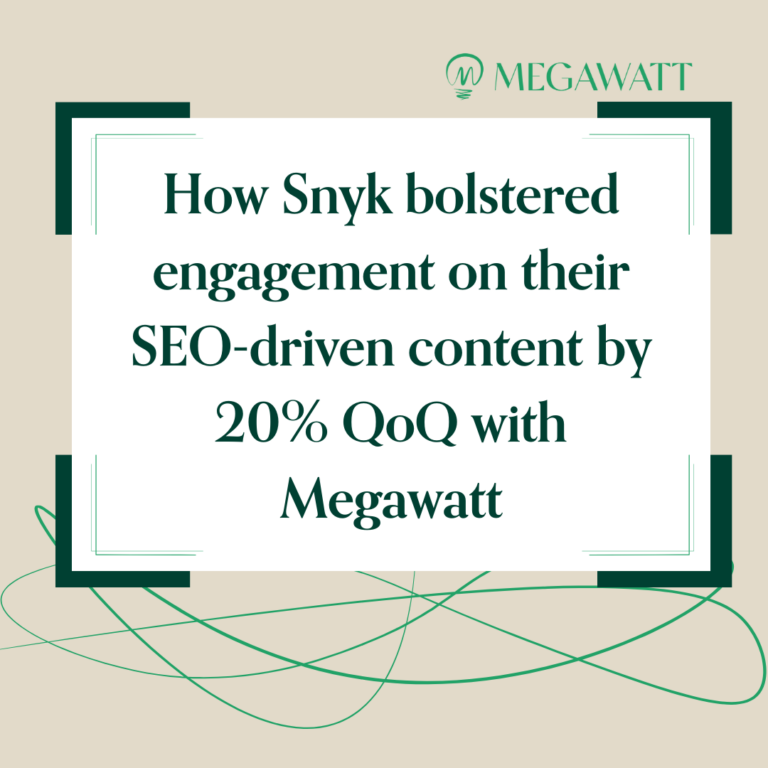Content analytics is a phrase many marketers dread — striking fear into the hearts of marketing professionals worldwide. Creating content is hard enough, but knowing what numbers matter, setting KPIs, and drawing insights from content analytics can be daunting. What if we told you it doesn’t have to be?
Measuring the results of your content marketing efforts is a key part of developing and refining your content strategy. To get the most out of content analytics, you’ll need to:
- Understand the context of each type of content you produce.
- Think critically about what you’re measuring and why.
- Recognize situations where analytics data isn’t relevant to your overarching business objectives.
Ready to accomplish the above? Let’s examine some hard truths about content analytics that will help transform your approach and better understand how and where content provides real value for your audience.
Truth #1: Content Analytics Requires Context
If content analytics are the metrics your organization uses to evaluate the performance of content, develop strategy, and create markers for future success, then how you view the metrics certainly matters. Context considers your audience, SEO goals, and the type of assets you’re evaluating. Here’s an example: an 80% bounce rate average across your blogs could be something to celebrate, whereas the same bounce rate for a paid ad campaign leading to a webinar registration page could be a cause for concern. Why?
Most visitors will leave your site after finding an answer to their Google query — indicated by the high bounce rate. However, one out of five visitors stick around to learn more about what your brand has to offer. That’s pretty good, especially if your blogs are designed for single-session consumption. On the other hand, the high bounce rate for your paid ad campaign begs the question: “Why did four out of five people who clicked the ad not follow through with signing up?”
Another core metric that needs more context is page views. Eyeballs on the page can measure brand awareness, and is typically the KPI organizations use to measure traffic growth, but it’s not tied directly to revenue. The modern B2B buyer’s journey isn’t linear, so you must be selective — and even creative — about the metrics you use to measure content success.
[Source: ActiveCampaign]
How to contextualize content analytics
So we know context matters in content analytics, but you might be wondering what changes you can make to ensure you’re contextualizing your metrics correctly. Here are a couple of things you can do:
- Customize your website analytics tools: Many businesses use their website analytics tool of choice (usually Google Analytics) out of the box, with little or no customization. This means you’re looking at default metrics, and assuming they’re relevant to your business. Collaborate with your marketing, sales, and product colleagues to determine which metrics matter and why.
- Gather customer feedback: It’s a good idea to check in regularly with sales, product, and customer success teams about which types of content come up most frequently in conversations with customers, partners, and key stakeholders. How does sales use your content to close deals? How does the product team use your content to explain functionality to sales?
Ideally, tracking is digital and reliable for most content performance metrics, but anecdotal evidence or cross-departmental analytics comparisons may provide critical insights.
Truth #2: Content Marketing Attribution Requires Patience and Creativity
Attribution in marketing refers to user behavior that leads to a desired outcome, typically called a conversion. Desired outcomes include newsletter signups, initiation of product trials, and demo requests. Content attribution, which measures how content contributes to conversions, is yet another piece of the content analytics puzzle requiring patience, creativity, and good ol’ fashioned trial and error to determine what works best for your business. Currently, there are three popular approaches to attribution in content analytics:
- Direct Attribution: Also known as last-touch attribution, direct attribution only accounts for users who converted directly from a given piece of content. It essentially answers the question, “How much money (or how many leads) did this content generate for us?”
- First-touch Attribution: In this approach, a user’s first interaction with your website gets the conversion credit. Many B2B tech companies use an awareness-driven content strategy, with the bulk of content created for the top or middle of the funnel (TOFU/MOFU).
- Multi-touch Attribution: Multi-touch attribution accounts for every touchpoint your target audience makes in a conversion. Several subtypes of multi-touch attribution assign different weights to content interactions based on perceived importance.
[Source: Measured.com]
Each model has pros and cons, but most agree that multi-touch attribution offers a more nuanced view of each piece of content’s role in conversion.
Getting started with multi-touch attribution can be challenging. Which weight to assign content types (e.g., social media marketing vs. email marketing) isn’t always apparent at first glance. There’s an underrated stock metric in Google Analytics that can help. Assisted Conversions (found under Conversions>Multi-Channel Funnels>Assisted Conversions) indicate where posts or pages are found in the conversion pathway. You can use this report to pinpoint which content is the first interaction in a conversion, the assist, or the last interaction.
Truth #3: It’s Possible to Let Content Analytics Ruin Your Marketing
Putting in the effort to make content analytics work for your business is important, but don’t let short-term metrics prevent you from focusing on long-term goals of creating quality content. If you focus too much on content performance versus content quality, you will likely see short-term gains and long-term losses.
For example, if your content strategy focuses on lead generation, you’ll likely end up with a content library that favors gated content. While this can be valuable in some instances, gated content should be used strategically and seen as secondary to boosting the quality of your content, related landing pages, and promotional material.
Content analytics is all about balance. Data does matter — calculating ROI and making data-driven budgeting recommendations depend on it. What’s most important, however, is developing a thoughtful content analytics strategy to better understand where content is performing well and get insight that improves content moving forward. Your goal isn’t just to create more content, but create more content that works.
We hope this helps you build a better content analytics strategy that really works for our organization. Remember, it’s an art and a science!
Need an expert to help develop or refine your B2B tech content marketing strategy? Let’s talk!





